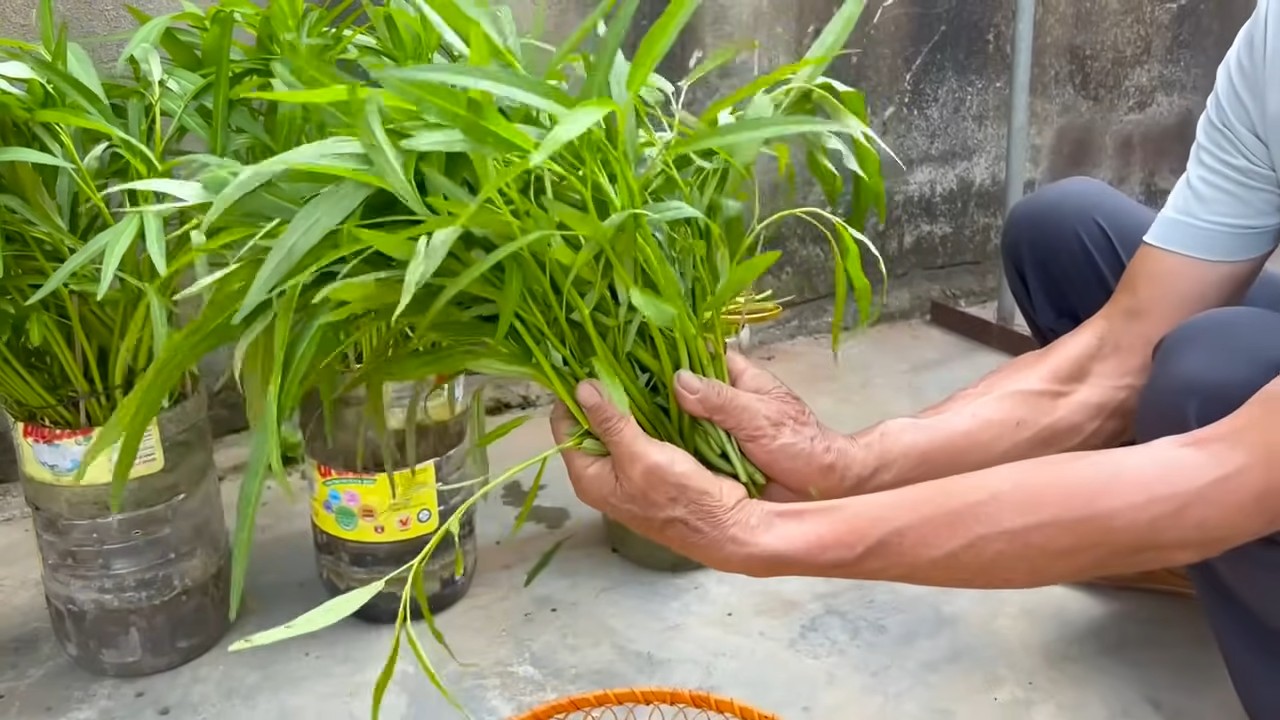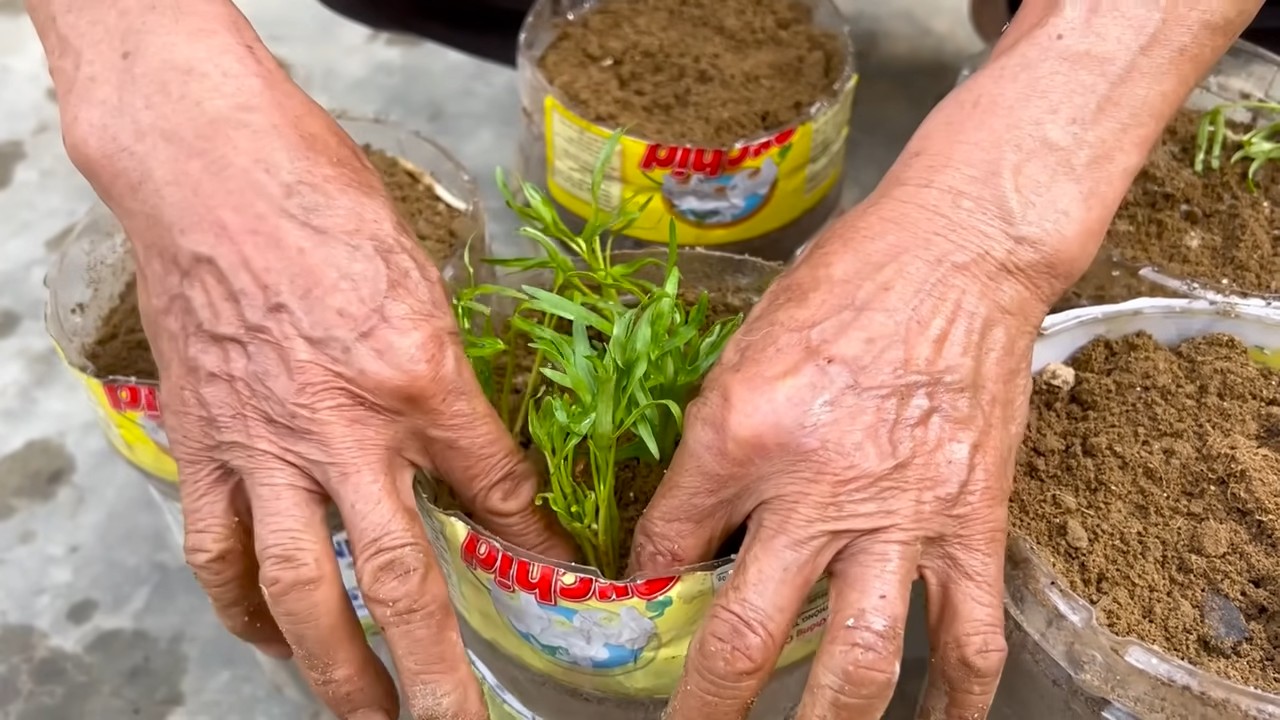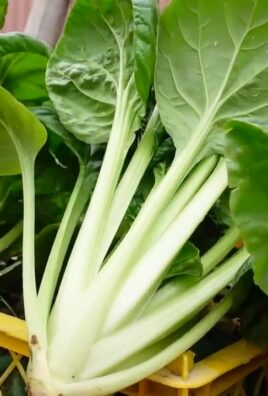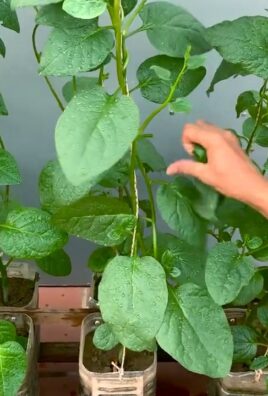Indoor Vegetable Gardening: Imagine plucking a ripe, juicy tomato straight from the vine, right in your own kitchen! No more trips to the grocery store for lackluster produce. No more wondering about pesticides or questionable growing practices. This isn’t just a dream; it’s the reality of indoor vegetable gardening, and I’m here to show you how to make it happen!
For centuries, humans have cultivated gardens, finding sustenance and solace in the earth. From the hanging gardens of Babylon to the meticulously planned kitchen gardens of medieval Europe, growing your own food has always been a vital part of human culture. But what if you don’t have a sprawling backyard? That’s where the magic of indoor vegetable gardening comes in.
In today’s fast-paced world, we’re increasingly disconnected from our food sources. We crave fresh, healthy options, but often lack the time or space for traditional gardening. That’s why these DIY tricks and hacks are essential. I’m going to share simple, effective methods for creating a thriving indoor vegetable garden, regardless of your experience level or living situation. Whether you’re a seasoned gardener or a complete beginner, I’ll guide you through the process, from choosing the right plants to troubleshooting common problems. Get ready to enjoy the satisfaction of growing your own delicious, nutritious vegetables, all within the comfort of your home!

Creating Your Own Thriving Indoor Vegetable Garden
Okay, let’s dive into the wonderful world of indoor vegetable gardening! I’m so excited to share this with you because growing your own food, even in a small space, is incredibly rewarding. We’re going to cover everything you need to know to get started, from choosing the right veggies to troubleshooting common problems. Get ready to have fresh, delicious produce right at your fingertips!
Choosing Your Vegetables
First things first, let’s talk about what you can actually grow indoors. Not all vegetables are created equal when it comes to indoor cultivation. Some need tons of sunlight and space, while others are perfectly happy in a container on your windowsill. Here’s a breakdown of some great options:
* Leafy Greens: These are your best friends! Lettuce, spinach, kale, arugula, and even Swiss chard are relatively easy to grow indoors. They don’t need intense sunlight and mature quickly.
* Herbs: Basil, mint, parsley, chives, oregano, thyme – the list goes on! Herbs thrive indoors and add amazing flavor to your cooking. Plus, they smell fantastic!
* Peppers: Smaller pepper varieties, like chili peppers or bell peppers, can do well indoors with enough light.
* Tomatoes: Dwarf or bush tomato varieties are your best bet. Cherry tomatoes are also a good choice.
* Radishes: These fast-growing root vegetables are perfect for beginners.
* Scallions (Green Onions): Super easy to grow from scraps!
* Microgreens: These tiny seedlings are packed with nutrients and can be grown in just a few days.
Gathering Your Supplies
Alright, now that we know what we’re growing, let’s gather our supplies. Here’s what you’ll need:
* Containers: Choose pots that are at least 6 inches deep for leafy greens and herbs, and 8-12 inches deep for tomatoes and peppers. Make sure they have drainage holes!
* Potting Mix: Don’t use garden soil! It’s too heavy and doesn’t drain well. Use a high-quality potting mix specifically designed for containers.
* Grow Lights (Optional but Recommended): While a sunny windowsill is great, grow lights will ensure your plants get enough light, especially during the winter months. LED grow lights are energy-efficient and work well.
* Seeds or Seedlings: You can start from seeds or buy seedlings from a local nursery. Seedlings will give you a head start.
* Watering Can or Spray Bottle: For watering your plants.
* Fertilizer: A balanced liquid fertilizer will help your plants thrive.
* Small Shovel or Trowel: For planting.
* Plant Labels: To keep track of what you’ve planted.
Planting Your Vegetables
Okay, let’s get our hands dirty! Here’s how to plant your vegetables:
1. Prepare Your Containers: Fill your containers with potting mix, leaving about an inch of space at the top.
2. Plant Your Seeds or Seedlings:
* From Seeds: Follow the instructions on the seed packet for planting depth and spacing. Generally, you’ll make a small hole, drop in the seed, and cover it lightly with soil.
* From Seedlings: Gently remove the seedling from its container, loosen the roots slightly, and plant it in the center of your pot. Make sure the top of the root ball is level with the soil surface.
3. Water Thoroughly: Water your plants gently until the water drains out of the bottom of the pot.
4. Label Your Plants: Use plant labels to keep track of what you’ve planted.
5. Place in a Sunny Location or Under Grow Lights: If you’re using a windowsill, choose one that gets at least 6 hours of sunlight per day. If you’re using grow lights, position them about 6-12 inches above the plants.
Caring for Your Indoor Vegetable Garden
Now that your plants are in their new homes, it’s time to take care of them! Here’s what you need to do:
1. Watering: Water your plants when the top inch of soil feels dry to the touch. Avoid overwatering, as this can lead to root rot.
2. Fertilizing: Fertilize your plants every 2-4 weeks with a balanced liquid fertilizer. Follow the instructions on the fertilizer label.
3. Light: Make sure your plants are getting enough light. If you’re using a windowsill, rotate the pots regularly to ensure even growth. If you’re using grow lights, keep them on for 12-16 hours per day.
4. Pruning: Prune your plants regularly to encourage bushier growth and remove any dead or yellowing leaves.
5. Pest Control: Keep an eye out for pests like aphids, spider mites, and whiteflies. If you see any pests, you can try spraying them with insecticidal soap or neem oil.
6. Pollination (for Tomatoes and Peppers): Tomatoes and peppers are self-pollinating, but they may need a little help indoors. You can gently shake the plants or use a small brush to transfer pollen from one flower to another.
Troubleshooting Common Problems
Even with the best care, you might encounter some problems along the way. Here are some common issues and how to fix them:
* Yellowing Leaves: This could be a sign of overwatering, underwatering, or nutrient deficiency. Check the soil moisture and adjust your watering accordingly. Fertilize your plants if necessary.
* Leggy Growth: This means your plants aren’t getting enough light. Move them to a sunnier location or use grow lights.
* Pests: As mentioned earlier, treat pests with insecticidal soap or neem oil.
* Lack of Fruit (for Tomatoes and Peppers): This could be due to lack of pollination or insufficient light. Make sure you’re pollinating your plants and that they’re getting enough light.
* Mold on Soil Surface: This is usually caused by overwatering. Allow the soil to dry out slightly between waterings. You can also sprinkle cinnamon on the soil surface, as it has antifungal properties.
Harvesting Your Vegetables
The best part! Harvesting your own homegrown vegetables is incredibly satisfying. Here are some tips:
* Leafy Greens: Harvest leafy greens when they’re young and tender. You can harvest individual leaves or cut the entire plant a few inches above the soil.
* Herbs: Harvest herbs as needed. Pinch off the leaves or stems.
* Radishes: Harvest radishes when they’re about an inch in diameter.
* Tomatoes and Peppers: Harvest tomatoes and peppers when they’re fully ripe and have reached their mature color.
Specific Vegetable Tips
Let’s get into some specifics for some popular choices:
Growing Lettuce Indoors
Lettuce is a fantastic choice for indoor gardening because it’s relatively easy to grow and doesn’t require intense sunlight.
1. Choose the Right Variety: Opt for loose-leaf varieties like ‘Black Seeded Simpson’ or ‘Red Sails’. These are compact and can be harvested continuously.
2. Container and Soil: Use a container that’s at least 6 inches deep and filled with a well-draining potting mix.
3. Planting: Sow seeds directly into the soil, about 1/4 inch deep. Keep the soil moist.
4. Light: Lettuce needs about 4-6 hours of sunlight per day. If you don’t have enough natural light, use grow lights.
5. Watering: Water regularly, keeping the soil consistently moist but not soggy.
6. Harvesting: You can start harvesting lettuce leaves when they’re about 4-6 inches long. Simply snip off the outer leaves, leaving the inner leaves to continue growing.
Growing Basil Indoors
Basil is a must-have herb for any kitchen garden. It’s easy to grow indoors and adds a delicious flavor to many dishes.
1. Choose the Right Variety: ‘Genovese’ basil is a popular choice, but you can also try ‘Thai’ basil or ‘Lemon’ basil.
2. Container and Soil: Use a container that’s at least 6 inches deep and filled with a well-draining potting mix.
3. Planting: You can start basil from seeds or cuttings. If starting from seeds, sow them directly into the soil, about 1/4 inch deep. If starting from cuttings, place the cuttings in water until they develop roots, then plant them in the soil.
4. Light: Basil needs about 6-8 hours of sunlight per day. If you don’t have enough natural light, use grow lights.
5. Watering: Water regularly

Conclusion
So, there you have it! Transforming your living space into a thriving indoor vegetable garden is not only achievable but also incredibly rewarding. We’ve explored the simple yet effective DIY trick of using repurposed containers and grow lights to cultivate fresh, delicious vegetables right inside your home. This method bypasses the limitations of outdoor space and seasonal constraints, allowing you to enjoy homegrown goodness year-round.
Why is this DIY indoor vegetable gardening trick a must-try? Because it empowers you to take control of your food source, reduces your reliance on store-bought produce (often laden with pesticides and transported long distances), and adds a touch of vibrant green to your indoor environment. Imagine the satisfaction of harvesting your own tomatoes for a salad, snipping fresh herbs for a pasta dish, or enjoying a crisp lettuce leaf straight from your indoor garden. The taste difference alone is worth the effort!
But the benefits extend beyond just flavor. Indoor vegetable gardening is a fantastic way to connect with nature, even in the heart of the city. It’s a therapeutic activity that can reduce stress, improve your mood, and provide a sense of accomplishment. Plus, it’s an educational opportunity for children (and adults!) to learn about plant life cycles and the importance of sustainable living.
Looking for variations to personalize your indoor garden? Consider these ideas:
* Vertical Gardening: Maximize space by creating a vertical garden using stacked planters or hanging baskets. This is perfect for smaller apartments or homes.
* Hydroponics: Explore hydroponic systems for a soil-free growing experience. This method can be highly efficient and requires less maintenance.
* Herb Garden Focus: Dedicate a section of your indoor garden solely to herbs. Basil, mint, parsley, and chives are all easy to grow indoors and add incredible flavor to your cooking.
* Sprouting Seeds: Sprout seeds in jars for nutrient-rich additions to salads and sandwiches. This is a quick and easy way to enjoy fresh greens.
* Experiment with Different Vegetables: Don’t be afraid to try growing different types of vegetables. Leafy greens like spinach and kale, peppers, and even dwarf varieties of tomatoes and cucumbers can thrive indoors with the right conditions.
We strongly encourage you to give this DIY indoor vegetable gardening trick a try. It’s easier than you might think, and the rewards are immeasurable. Start small, experiment with different techniques, and don’t be discouraged by initial setbacks. Every gardener, even the most experienced, has faced challenges along the way.
Most importantly, we want to hear about your experiences! Share your photos, tips, and stories in the comments section below. Let us know what vegetables you’re growing, what challenges you’ve overcome, and what successes you’ve celebrated. Your insights can inspire others to embark on their own indoor gardening journeys. Let’s create a community of indoor gardeners, sharing knowledge and supporting each other along the way. Happy gardening!
Frequently Asked Questions (FAQ)
What are the best vegetables to grow indoors for beginners?
For beginners venturing into indoor vegetable gardening, certain plants are more forgiving and easier to cultivate. Leafy greens like spinach, lettuce, and kale are excellent choices as they require less sunlight than fruiting vegetables. Herbs such as basil, mint, parsley, and chives are also relatively low-maintenance and thrive well indoors. Radishes are quick to mature and provide a satisfying harvest in a short amount of time. Starting with these easier-to-grow options will build your confidence and provide a foundation for expanding your indoor garden later.
How much light do indoor vegetables need?
Light is crucial for successful indoor vegetable gardening. Most vegetables require at least 6-8 hours of direct sunlight per day. If you don’t have a south-facing window that provides sufficient natural light, you’ll need to supplement with grow lights. LED grow lights are energy-efficient and provide the full spectrum of light that plants need to thrive. Position the grow lights close to the plants (but not so close that they burn the leaves) and adjust the height as the plants grow. A timer can automate the lighting schedule, ensuring consistent light exposure.
What kind of soil should I use for indoor vegetable gardening?
The right soil is essential for healthy plant growth. Avoid using garden soil, as it can be too heavy and may contain pests or diseases. Instead, opt for a well-draining potting mix specifically formulated for vegetables. These mixes typically contain a blend of peat moss, perlite, and vermiculite, which provide good aeration and drainage. You can also create your own potting mix by combining equal parts of these ingredients. Consider adding compost to the mix for added nutrients.
How often should I water my indoor vegetables?
Watering frequency depends on several factors, including the type of vegetable, the size of the container, and the humidity level in your home. As a general rule, water when the top inch of soil feels dry to the touch. Avoid overwatering, as this can lead to root rot. Ensure that your containers have drainage holes to allow excess water to escape. Use a watering can with a long spout to water the plants at the base, avoiding wetting the leaves.
How do I fertilize my indoor vegetables?
Indoor vegetables need regular fertilization to thrive. Use a balanced liquid fertilizer specifically formulated for vegetables. Follow the instructions on the fertilizer label for dilution and application frequency. Fertilize every 2-4 weeks during the growing season. Avoid over-fertilizing, as this can burn the roots. You can also use organic fertilizers like compost tea or fish emulsion.
How do I deal with pests and diseases in my indoor vegetable garden?
Pests and diseases can be a challenge in indoor vegetable gardening, but they can be managed with proper care. Regularly inspect your plants for signs of pests or diseases. If you spot any problems, take action immediately. Common pests include aphids, spider mites, and whiteflies. You can control these pests with insecticidal soap or neem oil. Diseases can be prevented by providing good air circulation and avoiding overwatering. Remove any infected leaves or plants to prevent the spread of disease.
Can I grow vegetables indoors year-round?
Yes, one of the biggest advantages of indoor vegetable gardening is the ability to grow vegetables year-round. With the right lighting, temperature, and humidity, you can enjoy fresh, homegrown produce even during the winter months. Choose vegetables that are well-suited to indoor growing conditions and adjust your care routine as needed to accommodate seasonal changes.
What is the ideal temperature for indoor vegetable gardening?
Most vegetables thrive in temperatures between 65°F and 75°F (18°C and 24°C). Avoid placing your plants near drafts or heating vents, as this can cause temperature fluctuations. If your home is too cold, you can use a heat mat to warm the soil. If it’s too hot, provide shade or increase ventilation.
How do I pollinate my indoor vegetables?
Some vegetables, like tomatoes and peppers, require pollination to produce fruit. Since there are no bees or other pollinators indoors, you’ll need to hand-pollinate them. Use a small paintbrush or cotton swab to transfer pollen from the male flower parts (anthers) to the female flower parts (stigmas). You can also gently shake the plants to release pollen.
What size containers should I use for indoor vegetable gardening?
The size of the container depends on the type of vegetable you’re growing. Leafy greens and herbs can be grown in smaller containers, while larger vegetables like tomatoes and peppers require larger pots. As a general rule, use containers that are at least 6-8 inches deep for leafy greens and herbs, and 12-18 inches deep for larger vegetables. Ensure that the containers have drainage holes to prevent waterlogging.





Leave a Comment